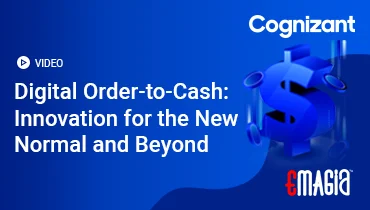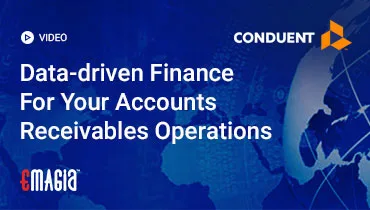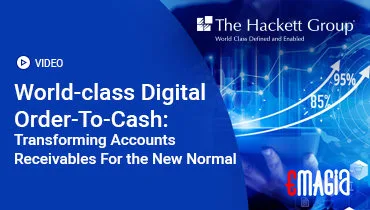The financial health of any business, from a budding startup to a multinational corporation, is directly tied to how efficiently it manages its working capital. At the heart of this management lies a crucial metric: the cash conversion cycle. It’s more than just a calculation; it’s a detailed story about how your business turns its investments in inventory and other resources into cold, hard cash. This comprehensive guide will demystify the cash conversion cycle, break down the cash conversion cycle formula, and provide you with actionable insights to optimize your company’s financial flow. We’ll explore everything from the fundamental cash cycle equation to the strategic implications of a negative cash conversion cycle, ensuring you have the knowledge to take control of your financial destiny.
Understanding the Cash Conversion Cycle for Business
Before we dive into the specific calculations, it’s essential to grasp the core concept. The cash conversion cycle (CCC) is a metric that measures the time, in days, that it takes a business to convert its investments in inventory and other resources into cash flow from sales. Think of it as the period between when you pay for inventory and when you get paid by your customers. It’s a powerful indicator of a company’s operational efficiency and liquidity. A shorter cycle is generally better, as it means the business is tying up its cash for a shorter period, freeing up capital for other investments or operations.
The Foundational Cash Cycle Equation
The essence of the cash cycle lies in a three-part journey that every dollar takes within your business. First, you invest cash to buy inventory. Then, you sell that inventory, often on credit, creating accounts receivable. Finally, you collect the cash from your customers. The CCC metric captures the entire length of this journey, but with a critical twist: it also accounts for the time you have to pay your suppliers, which effectively helps finance a portion of your operations. This is the difference between your cash operating cycle and the CCC, a distinction we will explore in detail later.
The Key Components of the Cash Conversion Cycle
To truly understand and improve your cash cycle, you must first understand its three pillars. Each component represents a critical stage in the journey from raw materials to cash in hand. They are: Days Inventory Outstanding (DIO), Days Sales Outstanding (DSO), and Days Payable Outstanding (DPO). Together, they form the complete cash conversion cycle equation.
Formula for Cash Cycle: A Step-by-Step Breakdown
The cash cycle formula is straightforward, but its components require careful calculation. The entire process hinges on data from your company’s financial statements. Below is the precise formula and a detailed explanation of each part, ensuring you can begin calculating cash cycle for your own business immediately.
Cash Conversion Cycle (CCC) = DIO + DSO – DPO
1. Days Inventory Outstanding (DIO)
This component, also known as the inventory conversion period, measures the average number of days it takes for a company to sell its inventory. A lower DIO is better, as it indicates efficient inventory management. To calculate DIO, you will need your average inventory and the cost of goods sold (COGS).
Formula:
DIO = (Average Inventory / Cost of Goods Sold) * 365
Content Detail: This section will delve into the nuances of calculating average inventory, what a high or low DIO signifies, and the practical steps a business can take to improve this metric. We will discuss strategies like optimizing supply chain logistics, implementing just-in-time inventory systems, and analyzing product turnover rates.
2. Days Sales Outstanding (DSO)
DSO, or the receivables conversion period, tracks the average number of days it takes for a company to collect payment from its customers after a sale is made. This is the heart of the cash collection cycle. A low DSO is a sign of effective credit and collections management. To calculate DSO, you need your average accounts receivable and total credit sales.
Formula:
DSO = (Average Accounts Receivable / Total Credit Sales) * 365
Content Detail: We’ll provide a comprehensive guide on how to calculate average accounts receivable, offer real-world examples, and explain why reducing DSO is so critical. We will also touch on how technologies can automate invoicing and collections to dramatically shorten this period. This is where your company’s credit policy and collection strategies come into play.
3. Days Payable Outstanding (DPO)
Also known as the payables deferral period, DPO measures the average number of days a company takes to pay its suppliers. Unlike the other two components, a higher DPO is often seen as beneficial because it means the company is holding onto its cash for a longer period. To calculate DPO, you need your average accounts payable and cost of goods sold (COGS).
Formula:
DPO = (Average Accounts Payable / Cost of Goods Sold) * 365
Content Detail: This part of the article will explain the strategic importance of DPO. We’ll discuss the delicate balance between extending payment terms to benefit your cash flow and maintaining good relationships with your suppliers. We will also provide insights on how to negotiate better terms and leverage supplier relationships to your advantage.
Interpreting and Using the Cash Conversion Period
Once you’ve done the hard work of the cash conversion cycle calculation, what do the numbers actually tell you? The resulting figure is more than just a number; it’s a diagnostic tool for your business’s operational health. A positive CCC means you are tying up cash for a certain number of days, while a negative CCC is a sign of exceptional financial prowess. Let’s explore these interpretations.
What Does a Negative Cash Conversion Cycle Mean?
For most businesses, a positive CCC is the norm. A negative cash conversion cycle is a rare and highly sought-after state where a company receives cash from its customers before it has to pay its suppliers. In essence, the suppliers are financing the company’s operations. This is a characteristic of some of the world’s most efficient companies, such as Amazon and Dell. We will dive deep into how this is achieved, its benefits, and the specific market conditions that allow it to happen.
The Critical Distinction: Cash Operating Cycle vs. Cash Conversion Cycle
It’s a common mistake to use these two terms interchangeably, but they represent different aspects of your business. The cash operating cycle is simply the sum of DIO and DSO. It measures the time from purchasing inventory to receiving cash from customers, without considering the time you have to pay suppliers. The cash conversion cycle, by subtracting DPO, gives a truer picture of the time your cash is actually tied up. This section will clarify the difference with clear examples, helping you use the right metric for the right analysis.
Advanced Strategies to Optimize the Cash Conversion Cycle
A low or negative cash cycle is not an accident—it is the result of deliberate and strategic action. This section will provide an in-depth look at how businesses can actively manage and shorten their CCC. By focusing on each component of the cash conversion formula, you can unlock significant cash flow improvements.
- Accelerating Your Cash Collection Cycle: We will discuss best practices for invoicing, offering early payment discounts, implementing automated reminders, and leveraging technology to speed up collections. This directly impacts your DSO.
- Streamlining Your Inventory Management: This is about more than just selling products faster. We’ll cover forecasting, implementing just-in-time inventory strategies, and reducing obsolete stock to lower your DIO.
- Optimizing Your Payables: We will explore how to negotiate extended payment terms with suppliers without damaging relationships, and how to use the DPO metric to your advantage.
How Emagia Helps Revolutionize Your Cash Cycle
The journey to a shorter, more efficient cash conversion cycle is often hindered by manual, time-consuming processes. Invoicing, collections, and reconciling payments can tie up valuable human and financial resources. This is where intelligent automation and AI come in. Emagia provides an AI-powered platform that transforms these processes, helping businesses to dramatically improve their CCC. By automating collections, Emagia helps to significantly reduce the Days Sales Outstanding (DSO) by ensuring that invoices are sent on time, reminders are automated, and payments are collected more quickly. This technology provides real-time visibility into the entire order-to-cash process, empowering finance teams with actionable insights to identify bottlenecks and take swift action. Through intelligent credit management and dispute resolution tools, Emagia helps businesses not only collect cash faster but also optimize their working capital and improve overall liquidity. This strategic partnership with automation allows companies to move from reactive cash management to a proactive, data-driven approach, fundamentally shortening the time it takes to convert sales into cash.
FAQs on the Cash Conversion Cycle
What is a good cash conversion cycle?
A good cash conversion cycle is typically considered to be a low number of days. The ideal CCC is negative, meaning a business receives cash from customers before it pays its suppliers. However, what is “good” can vary significantly by industry. Retailers often have a very low or negative CCC, while manufacturers may have a longer one. It’s best to compare your CCC to industry benchmarks.
Is the cash conversion cycle a good measure of a company’s financial health?
Yes, the CCC is an excellent measure of a company’s operational efficiency and short-term liquidity. A consistently declining CCC over time suggests that management is effectively optimizing its working capital. However, it should not be used in isolation and should be analyzed alongside other metrics like profitability and cash flow from operations for a complete picture.
What is the cash to cash cycle formula?
The cash to cash cycle formula is another name for the cash conversion cycle formula. It is calculated as: CCC = Days Inventory Outstanding + Days Sales Outstanding – Days Payable Outstanding.
How do you calculate the cash conversion cycle?
To calculate the cash conversion cycle, you must first calculate the three individual components: Days Inventory Outstanding (DIO), Days Sales Outstanding (DSO), and Days Payable Outstanding (DPO). The final step is to use the formula: CCC = DIO + DSO – DPO. This guide provides the specific formulas for each component to help you get started.
How is the cash conversion cycle different from the operating cycle?
The key difference is that the operating cycle does not account for the time a company takes to pay its suppliers. The operating cycle only measures the time it takes to sell inventory and collect the cash from that sale. The cash conversion cycle, by subtracting the days a company takes to pay its suppliers, provides a more accurate measure of the time that a company’s cash is actually tied up in operations.



